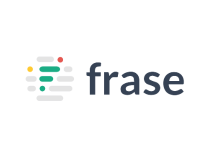Modern journalism faces unprecedented challenges in creating fresh, engaging content while maintaining accuracy and meeting tight deadlines. AI rewording tools have emerged as game-changing solutions that help journalists transform existing information into original, compelling narratives without compromising editorial integrity.
These sophisticated platforms enable newsrooms to enhance productivity while preserving the authentic voice that readers expect from quality journalism.
Key Takeaways
- AI rewording tools enhance journalism productivity by transforming existing content into fresh, original narratives while maintaining factual accuracy.
- Top platforms like Team-GPT, GPTinf, and QuillBot offer specialized features including keyword preservation, tone adaptation, and real-time collaboration for newsroom workflows.
- These tools utilize natural language processing to understand context, adapt writing styles, and optimize content for different audiences and platforms.
- Journalists can maintain authenticity by using AI tools as enhancement aids rather than complete replacements for human creativity and editorial judgment.
- Proper implementation of AI rewording tools can significantly improve SEO performance and content reach without sacrificing journalistic standards.
The landscape of news production continues to evolve as digital platforms demand more content at faster speeds than ever before.
Understanding AI Rewording Tools in Modern Journalism

Source: Anete Lusina of Pexel
AI rewording tools represent a fundamental shift in how journalists approach content creation and story development. These advanced platforms use machine learning algorithms to analyze existing text and generate alternative versions that maintain the original meaning while presenting information in new, engaging ways. Unlike simple synonym replacers or basic paraphrasing tool options, modern AI systems understand context, tone, and audience requirements.
The distinction between traditional writing aids and AI-powered solutions becomes clear when examining their capabilities. A rewording tool free of advanced features might simply swap words, while sophisticated AI platforms can restructure entire paragraphs, adapt tone for different demographics, and even suggest improvements for clarity and impact.
Core Components of AI Rewording Technology
- Natural Language Processing: Analyzes sentence structure, grammar patterns, and semantic relationships
- Context Recognition: Understands the broader meaning and maintains factual accuracy during transformation
- Style Adaptation: Adjusts writing tone to match publication standards or target audience preferences
- Content Optimization: Enhances readability scores and SEO performance through strategic word choices
- Real-time Collaboration: Enables multiple editors to work simultaneously on content refinement
Popular Platforms for News Organizations
Team-GPT leads the market with customizable prompts and multiple AI model selections that allow journalists to tailor output for specific story types. GPTinf excels in creating natural, human-like content while offering keyword freeze functionality that preserves important SEO terms during the rewriting process.
QuillBot remains popular among newsrooms for its multiple rewrite modes including Fluency, Formal, and Creative options that suit different editorial needs.
| Platform | Best Feature | Ideal Use Case | Pricing Model |
|---|---|---|---|
| Team-GPT | Multi-model AI selection | Collaborative newsroom editing | Subscription-based |
| GPTinf | Keyword preservation | SEO-focused news content | Free trial + premium |
| QuillBot | Multiple rewrite modes | Quick sentence restructuring | Freemium model |
| Smodin | Simple interface | Breaking news rewrites | Free with limitations |
| Wordtune | Human-like output | Feature stories | Premium subscription |
The integration of these tools into newsroom workflows requires understanding their strengths and limitations for different types of journalistic content.
How AI Rewording Technology Works for News Content

Source: Anete Lusina of Pexels
The mechanics behind AI rewording involve sophisticated natural language processing that goes far beyond simple word substitution. These systems analyze the semantic structure of sentences, identify key concepts, and reconstruct information using alternative phrasing while preserving factual accuracy. The process begins with content parsing, where algorithms break down text into meaningful components including subjects, verbs, modifiers, and contextual relationships.
Advanced platforms employ multiple layers of analysis to ensure output quality meets journalistic standards. The reword ai to human functionality focuses on creating natural-sounding prose that maintains the authoritative tone readers expect from news sources.
Natural Language Processing in Action
Modern AI systems utilize transformer models that understand context across entire articles rather than processing sentences in isolation. This comprehensive approach enables tools to maintain narrative flow and logical progression throughout rewritten content. The technology recognizes when technical terms, proper nouns, or specific phrases should remain unchanged to preserve accuracy.
Pattern recognition algorithms identify writing styles and can adapt content to match publication guidelines or target different audience segments.
Tone Adaptation and Style Matching
Professional rewording tool online platforms offer sophisticated tone controls that allow journalists to adjust content for different publication contexts. Breaking news requires crisp, direct language, while feature stories benefit from more descriptive, engaging prose. AI systems can analyze existing publication content to learn house style preferences and apply these patterns to new material.
The reword app functionality extends to mobile platforms, enabling reporters to refine content while in the field or during live event coverage.
Content Optimization Features
- SEO Enhancement: Strategic keyword placement without compromising readability
- Readability Scoring: Real-time analysis of content complexity and audience appropriateness
- Fact Preservation: Maintains accuracy of dates, names, and statistical information
- Length Control: Expands or condenses content to meet specific word count requirements
- Format Adaptation: Adjusts content structure for different platforms (web, print, social media)
These optimization features work together to create content that performs well across multiple distribution channels while maintaining editorial quality standards.
Key Benefits for Journalists and Newsrooms

Source: cottonbro studio of Pexels
AI rewording tools deliver measurable improvements in newsroom productivity and content quality when implemented strategically. Speed represents the most immediate advantage, with journalists able to transform wire service content, press releases, and background research into original articles within minutes rather than hours. This acceleration enables newsrooms to respond faster to breaking news while maintaining comprehensive coverage of ongoing stories.
Quality enhancement extends beyond simple speed improvements to include better clarity, improved readability, and more engaging presentation of complex information. The reword my sentence functionality helps journalists refine individual statements for maximum impact and clarity.
- Deadline Management: Faster turnaround on time-sensitive stories without sacrificing quality
- Resource Optimization: Allows experienced journalists to focus on investigation and analysis rather than routine rewriting
- Consistency Maintenance: Ensures uniform style and tone across different writers and story types
- Multi-Platform Publishing: Quickly adapts content for web, social media, and print distribution
- SEO Performance: Improves search visibility through strategic keyword integration and readability optimization
Cost efficiency becomes particularly important for smaller newsrooms operating with limited staff and tight budgets.
Maintaining Editorial Standards
Professional AI tools include built-in safeguards that help journalists maintain accuracy and ethical standards during the rewriting process. Advanced platforms flag potential issues with fact distortion, tone inconsistencies, or content that might require additional verification. The ai detector functionality helps editors identify when content needs human review or additional fact-checking.
Quality control features enable newsrooms to establish approval workflows that ensure all AI-assisted content meets publication standards before release.
SEO and Audience Engagement Impact
Modern rewording tools understand the relationship between content structure and search engine performance. They can identify opportunities to improve keyword density, enhance meta descriptions, and create more engaging headlines without compromising journalistic integrity. These improvements directly impact article visibility and reader engagement metrics.
Analytics integration allows newsrooms to track performance improvements and adjust their AI tool usage based on actual reader response data.
| Benefit Category | Specific Advantage | Measurable Impact | Implementation Time |
|---|---|---|---|
| Speed | Faster content production | 50-70% time reduction | Immediate |
| Quality | Improved readability | Higher engagement rates | 1-2 weeks |
| SEO | Better search ranking | Increased organic traffic | 1-3 months |
| Consistency | Uniform style | Brand recognition | 2-4 weeks |
| Cost | Resource efficiency | Reduced production costs | 1 month |
The transition to incorporating AI tools requires careful planning and staff training to maximize these benefits while maintaining editorial quality.
Best Practices for Maintaining Authenticity and Voice

Source: cottonbro studio of Pexels
Successful implementation of AI rewording tools requires establishing clear guidelines that preserve the unique voice and perspective that defines quality journalism. The goal involves using technology to enhance human creativity rather than replace editorial judgment and critical thinking. Journalists must develop skills to effectively collaborate with AI systems while maintaining the investigative rigor and ethical standards that readers expect.
Authentication processes become crucial when using AI assistance to ensure all factual claims remain accurate and properly attributed. The rewording tool online capabilities should complement rather than substitute for traditional fact-checking and source verification procedures.
Developing Effective Prompts and Guidelines
Creating specific instructions for AI tools helps ensure consistent output that aligns with publication standards and editorial voice. Effective prompts include context about target audience, desired tone, key points to emphasize, and any sensitive topics that require careful handling. Journalists should develop template prompts for different story types including breaking news, feature articles, investigative pieces, and opinion content.
Regular review and refinement of these prompts based on output quality and reader feedback helps improve results over time.
Human Oversight and Editorial Control
AI-generated content should always undergo human review before publication, with editors checking for factual accuracy, tone appropriateness, and alignment with publication values. This oversight process includes verifying that quotes remain accurate, statistical information stays current, and all sources receive proper attribution. The review workflow should include multiple checkpoints for controversial or complex topics.
Training programs help editorial staff develop skills to effectively evaluate and refine AI-generated content while maintaining production speed advantages.
Balancing Efficiency with Authenticity
- Source Attribution: Ensure all AI-rewritten content maintains proper citation and attribution standards
- Fact Verification: Double-check all statistical data, dates, and factual claims after AI processing
- Voice Consistency: Review output to ensure it matches the publication’s established editorial voice and style
- Context Preservation: Verify that important nuances and context remain intact through the rewriting process
- Ethical Compliance: Confirm all content meets journalism ethics standards and legal requirements
Reader Trust and Transparency
Some publications choose to disclose when AI tools assist in content creation, while others focus on ensuring the final product meets quality standards regardless of production methods. The key lies in maintaining reader trust through consistent delivery of accurate, well-researched, and engaging content. Transparency policies should align with publication values and reader expectations.
Regular audience feedback collection helps gauge reader satisfaction and identify areas where AI assistance enhances or detracts from content quality.
Building on these foundational practices, newsrooms can explore additional platforms that complement AI rewording capabilities.
Additional Platforms to Enhance Your Journalism Workflow

Source: Sezer Uzunoğlu of Pexels
Beyond core rewording functionality, several specialized platforms offer complementary features that can further enhance journalistic content creation and workflow efficiency. These tools provide unique capabilities that address specific aspects of news production, from headline optimization to comprehensive content research. Each platform brings distinct strengths that can integrate seamlessly with existing AI rewording workflows.
The following platforms represent valuable additions to any journalist’s toolkit, offering specialized features that extend beyond basic text transformation.
StoryLab
StoryLab specializes in headline generation and social media optimization, helping journalists create compelling titles that drive engagement across multiple platforms. The platform analyzes trending topics and audience preferences to suggest headlines that balance clickworthiness with editorial integrity.
Grow your Reach and Engagement, Brand and Demand — With our AI Content Marketing & Team Social Media Management Suite.
Scalenut
Scalenut combines content research with AI writing capabilities, providing journalists with comprehensive topic analysis and competitor content insights. The platform excels at identifying trending angles and suggesting story approaches based on current search patterns and audience interest.
An AI-powered Organic Marketing Platform that drives and optimizes every stage of your content lifecycle, from creation to distribution and performance analysis.
AI-Writer
AI-Writer focuses on research-backed content generation, automatically citing sources and providing factual foundation for articles. The platform particularly benefits investigative journalists who need to quickly synthesize information from multiple sources while maintaining accuracy.
You need content with information you can trust all the time. AI-Writer is the only AI content generator that cites sources for everything it writes. Competing platforms create text out of thin air and you never know where it's wrong. Something even Google and Meta had to learn the hard way.
Writecream AI
Writecream AI offers specialized templates for different types of journalistic content, from press release transformations to interview transcription summaries. The platform streamlines routine writing tasks that consume significant time in daily news production.
Instantly create high-quality marketing content and sales emails in seconds, all at a fraction of the cost. Start your free trial now—no credit card needed.
INK
INK combines AI writing assistance with real-time SEO optimization, helping journalists create content that performs well in search results without sacrificing readability. The platform provides detailed analytics on content performance and optimization opportunities.
With Google and other platforms cracking down on AI content, we offer a comprehensive AI Content Platform designed to prioritize safety and detect potential issues.
Texta
Texta specializes in multi-language content creation and translation, valuable for international news coverage and reaching diverse audiences. The platform maintains context and cultural sensitivity across different language versions of the same story.
The easiest method to generate high-quality, SEO-optimized, and engaging content for your blog that boosts visibility and drives audience engagement effectively.
Simplified
Simplified offers an all-in-one approach combining writing tools with graphic design capabilities, ideal for journalists creating multimedia content packages. The platform enables quick creation of social media graphics and infographics to accompany written articles.
Get all your graphic design, video editing, AI writing, social media management, app creation, and more – conveniently available in one comprehensive platform.
Frase
Frase excels at content research and question identification, helping journalists understand what audiences want to know about specific topics. The platform analyzes search queries and social media discussions to guide story development and angle selection.
These specialized tools work best when integrated thoughtfully into existing workflows rather than replacing established editorial processes.
Frase AI enables you to efficiently research, write, and optimize high-quality SEO content in just minutes, significantly reducing the time spent compared to hours.
Moving Forward with AI-Enhanced Journalism
AI rewording tools represent a significant opportunity for journalists to enhance productivity while maintaining the quality and authenticity that readers demand. Success depends on thoughtful implementation that treats these platforms as collaborative partners rather than replacements for human creativity and editorial judgment.
The future of journalism lies in finding the right balance between technological efficiency and the irreplaceable value of human insight, investigation, and storytelling expertise.
Please visit our blog to learn more about AI writing tools.
FAQs
What is the AI tool for rewording?
AI rewording tools are software applications that use natural language processing and machine learning to transform existing text into new versions while preserving the original meaning. Popular options include Team-GPT for collaborative editing, GPTinf for natural human-like output, and QuillBot for quick sentence-level paraphrasing. These tools analyze context, grammar, and semantic relationships to create alternative phrasings that maintain factual accuracy while improving readability and engagement.
How can AI be used for journalism?
AI supports journalism through content creation, research assistance, fact-checking, and workflow optimization. Journalists use AI tools to rewrite press releases into original articles, transcribe interviews, analyze large datasets, and adapt content for different platforms. AI also helps with headline optimization, SEO enhancement, and identifying trending topics. The technology enables faster content production while maintaining quality standards, allowing journalists to focus more time on investigation, analysis, and source development.
What is a rewording tool used for?
Rewording tools serve multiple purposes including avoiding plagiarism, improving content clarity, adapting text for different audiences, and enhancing SEO performance. Journalists use these tools to transform wire service content, press releases, and research materials into original articles. They also help create multiple versions of the same story for different platforms, improve readability scores, and ensure consistent tone across publications. Academic and business writers use rewording tools to paraphrase sources and create unique content from existing materials.
What tools do news reporters use?
Modern reporters use diverse digital tools including AI rewording platforms like QuillBot and GPTinf, content management systems, social media monitoring tools, and mobile apps for field reporting. Essential equipment includes recording devices, cameras, laptops, and smartphones with specialized journalism apps. Research tools like Google Alerts, media databases, and fact-checking platforms support story development. Communication tools enable real-time collaboration with editors and sources, while analytics platforms help track story performance and audience engagement.
Can AI rewording be detected?
Yes, AI-generated and reworded content can often be detected using specialized detection tools, though accuracy varies depending on the sophistication of both the generation and detection systems. Many AI rewording platforms now include built-in detection scoring to help users understand how their content might be perceived. Detection becomes more challenging when AI tools produce high-quality, human-like output and when users apply proper editing and review processes. The key lies in using AI as an enhancement tool rather than a complete replacement for human writing and editorial oversight.



















